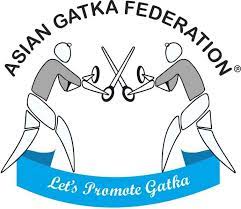WHAT IS GATKA
Understanding Gatka: A Martial Tradition
Gatka is a traditional martial art characterized by a unique style of stick fighting, involving two or more practitioners wielding wooden sticks, referred to as ‘Soti.’ These sticks are intentionally designed to simulate the use of swords. This ancient practice originated as a fundamental technique for self-defense, employed by Sikh warriors during the martial era under the guidance of the great Sikh Gurus.

The primary purpose of Gatka is self-defense, serving as an essential training ground for individuals before they opt for the use of a sword, known as ‘Kirpan.’ In the realm of Gatka, the ‘Stick’ and ‘Farrie,’ a leather shield, are ingeniously used as substitutes for the Sword and Shield, respectively, during practice sessions. The essence of Gatka unfolds as one practitioner launches an attack, prompting the opponent to skillfully block the strike and retaliate, creating a fluid sequence of maneuvers. This intricate combat encompasses a well-choreographed combination of footwork alongside offensive and defensive techniques.

Gatka has evolved over time, with a pivotal transformation into a formalized sport during the 19th century. It is now performed and played in two distinct sub-styles: ‘Virasat’ (traditional) and ‘Khed’ (sport), each embodying its unique characteristics. This division has persisted since 1920, offering practitioners a choice between preserving traditional techniques and embracing a more competitive approach.

The significance of Gatka is reflected in historical texts, including ‘Mahan Kosh,’ authored by renowned historian Bhai Kahan Singh Nabha. Describing Gatka in his encyclopedic work, he portrays it as “a three-hand span stick, used to teach the first part of club fighting, with a leather covering.” In Gatka, two skilled combatants engage in combat, one holding a Gatka and the other a ‘Farrie.’ Bhai Nabha notes that ‘Gatka’ is synonymous with ‘ Kutka or Khutka,’ and both terms refer to the same concept.

- ‘Urdu-Punjabi-Hindi Kosh,’ published by the Language Department of Punjab, defines ‘Khutka’ as ‘Kutka’ or ‘Mota Danda’ (cudgel), suggesting a connection between these terms. Furthermore, ‘Punjabi English Dictionary,’ published by Singh Brothers, Amritsar, translates ‘Kutka’ as a ‘short cudgel’ or ‘thick stick.
- Similarly, the term ‘Gatka’ is associated with a ‘leather-covered club used in fencing,’ as described in ‘Punjabi English Dictionary.’ ‘Standard Illustrated Dictionary of The Hindi Language,’ edited by Prof. R. C. Pathak, provides the meaning of ‘Gatka’ as ‘a leather-covered club used in fencing, a truncheon, a mace, a club.’ In this context, the word ‘Gadaa’ is also explained as ‘a club, an Indian club, a mace.’
- Therefore, ‘Khutka,’ ‘Kutka,’ ‘Gatka,’ ‘Gadka,’ and ‘Gadaa’ share close associations, if not complete equivalence, often representing cudgel, club, short thick stick, or truncheon. Following this discussion, it is evident that ‘Gatka’ signifies a cudgel, club, or short thick stick.
- While Gatka was initially displayed during religious processions, The National Gatka Association of India (NGAI) and Gatka Association Punjab, in collaboration with the World Gatka Federation (WGF), Asian Gatka Federation (AGF), and International Sikh Martial Art Council (ISMAC), have undertaken significant initiatives to revive and promote this unique martial art, transforming it into a recognized sport in India and around the world.
